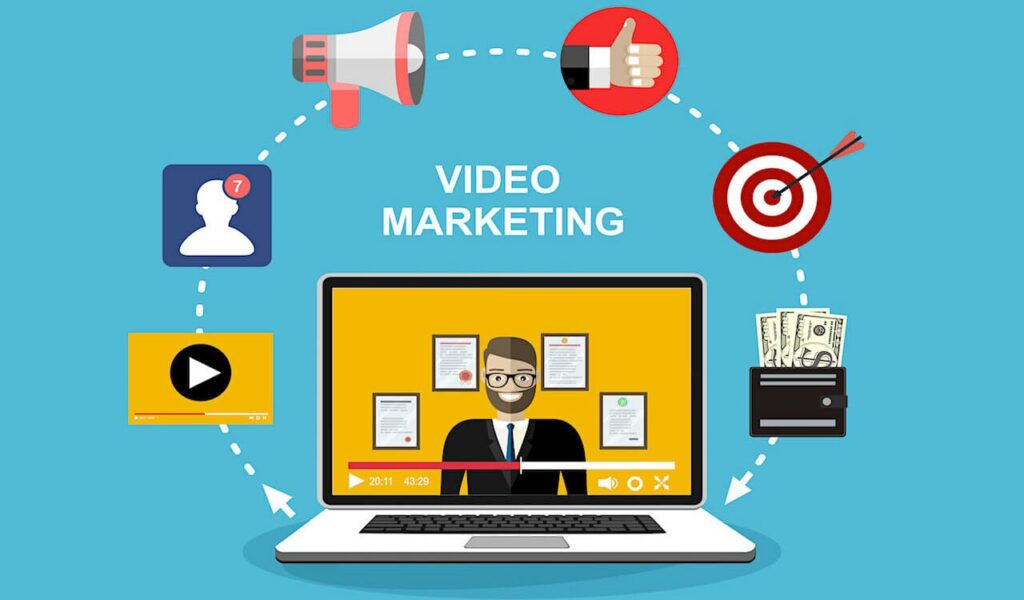Video marketing is a strategy that uses video content to promote and market a product, service, or brand. It is a powerful tool for businesses to connect with their audience, engage customers, and drive conversions. Video marketing can be employed across various platforms such as websites, social media, email campaigns, and video-sharing platforms like YouTube.
Creating an effective video marketing strategy requires a clear understanding of your audience, goals, and resources. Here’s an ultimate guide to help you design and execute a successful video marketing plan:
1. Define Your Objectives
- Clarify Goals: Are you aiming to increase brand awareness, drive sales, educate customers, or boost engagement? Your goal determines the type of videos you’ll create.
- Set Measurable KPIs: Examples include views, click-through rates, conversion rates, or engagement metrics like shares and comments.
2. Know Your Audience
- Develop Buyer Personas: Identify your audience’s demographics, preferences, pain points, and behaviors.
- Use Analytics: Leverage tools like Google Analytics, YouTube Analytics, or social media insights to understand what resonates with your audience.
3. Choose the Right Types of Videos
- Explainer Videos: Great for educating your audience about your product or service.
- How-To Tutorials: Provide value by solving specific problems.
- Product Demos: Showcase features and benefits.
- Customer Testimonials: Build trust through social proof.
- Live Streams: Engage in real-time with your audience.
- Behind-the-scenes: Humanize your brand.
- Short-form Content: Platforms like TikTok and Instagram Reels thrive on brief, snappy videos.
4. Create High-Quality Content
- Plan Your Script: Write concise and engaging scripts tailored to your audience.
- Focus on Storytelling: Emotionally connect with your viewers through compelling narratives.
- Invest in Production: Use quality cameras, lighting, and sound. Smartphones with good editing tools can suffice for budget constraints.
- Brand Consistency: Maintain consistent colors, logos, and tone across your videos.

5. Optimize for Platforms
- YouTube: Focus on SEO by using relevant keywords in titles, descriptions, and tags. For long videos, include timestamps.
- Instagram & TikTok: Create visually appealing, vertical, and short-form content.
- LinkedIn: Use professional, value-driven videos targeted at industry professionals.
- Facebook: Leverage Facebook Live and native videos for a broad audience.
- Twitter: Focus on concise, eye-catching content.
- Website: Embed videos on landing pages and blogs to increase on-page engagement.
6. Focus on Distribution
- Cross-Promote: Share your video across multiple platforms for maximum reach.
- Email Campaigns: Include videos in newsletters or promotional emails to boost click rates.
- Leverage Paid Ads: Platforms like YouTube, Facebook, and TikTok Ads allow precise audience targeting.
- Collaborations: Partner with influencers or other brands for increased visibility.
7. Engage with Your Audience
- Encourage Interaction: Prompt viewers to like, comment, share, or subscribe.
- Respond to Comments: Build a relationship with your audience by interacting with them.
- Use Polls and Questions: Platforms like Instagram Stories allow you to gather feedback and boost engagement.
8. Video Marketing Strategy Track and Analyze Performance
- Key Metrics to Monitor:
- Views: How many people watched your video?
- Watch Time: How long viewers stay engaged.
- Engagement Rate: Likes, shares, comments.
- Conversion Rate: How many viewers took the desired action?
- Tools: Use YouTube Analytics, Google Analytics, or social media insights.
9. Experiment and Iterate
- A/B Testing: Test different thumbnails, titles, and video formats.
- Stay Updated: Adapt to emerging trends, platform algorithm changes, and audience preferences.
Finally, Video marketing is important because it is one of the most effective and versatile tools for engaging audiences, building brand awareness, and driving conversions. Here are the key reasons why video marketing is vital for businesses and marketers.
By following this guide, you’ll be well-equipped to develop a video marketing strategy that drives meaningful results for your business. Let me know if you’d like help creating a specific plan or brainstorming ideas! By integrating video marketing into your overall strategy, you can create meaningful connections with your audience and achieve measurable business outcomes.

